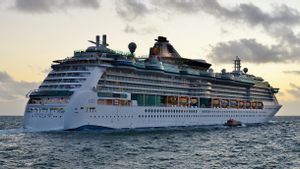JAKARTA - After completing a 26-day mission in lunar orbit, the Orion spacecraft returned to the Kennedy Space Center (KSC), Florida, United States (US) last week and will undergo a series of analyses to see how his condition is.
Orion departed for lunar orbit on NASA's Artemis I mission on November 16 last year aboard the giant Space Launch System (SLS) rocket.
The plane was designed for a manned mission but it flew unmanned, where NASA wanted to first see Orion's ability to advance in that lunar orbit. Then, Orion plunged freely into the Pacific Ocean on December 11, marking the end of the mission.
He was found by the USS Portland ship and then taken to the San Diego Naval Base on December 13, and began a land trip to KSC the next day.
Arriving at KSC, NASA will remove the spacecraft's heat shield so they can conduct an in-depth analysis of the Orion component and determine how it is in its condition as long as it re-enters Earth's atmosphere.
NASA will also issue Campos Moonikin, a test doll sent by the space agency to Orion to collect data on how travel to the Moon could affect humans.
"Artemist I is a major step forward as part of NASA's lunar exploration efforts and set the stage for the next mission of the SLS and Orion rockets to fly crews around the Moon with Artemis II," NASA said.
Usai melakukan analisis Artemis I, NASA akan melanjutkan pengembangan untuk misi Artemis II yang diklaim akan meluncurasi paling cepat pada 2024.
NASA pledged to announce the crew of the four missions around early 2023. Artemis II will set up a stage for its first human landing on the Moon since the end of the Apollo program in 1972, and eventually become NASA's permanent presence on the Moon.
The English, Chinese, Japanese, Arabic, and French versions are automatically generated by the AI. So there may still be inaccuracies in translating, please always see Indonesian as our main language. (system supported by DigitalSiber.id)













